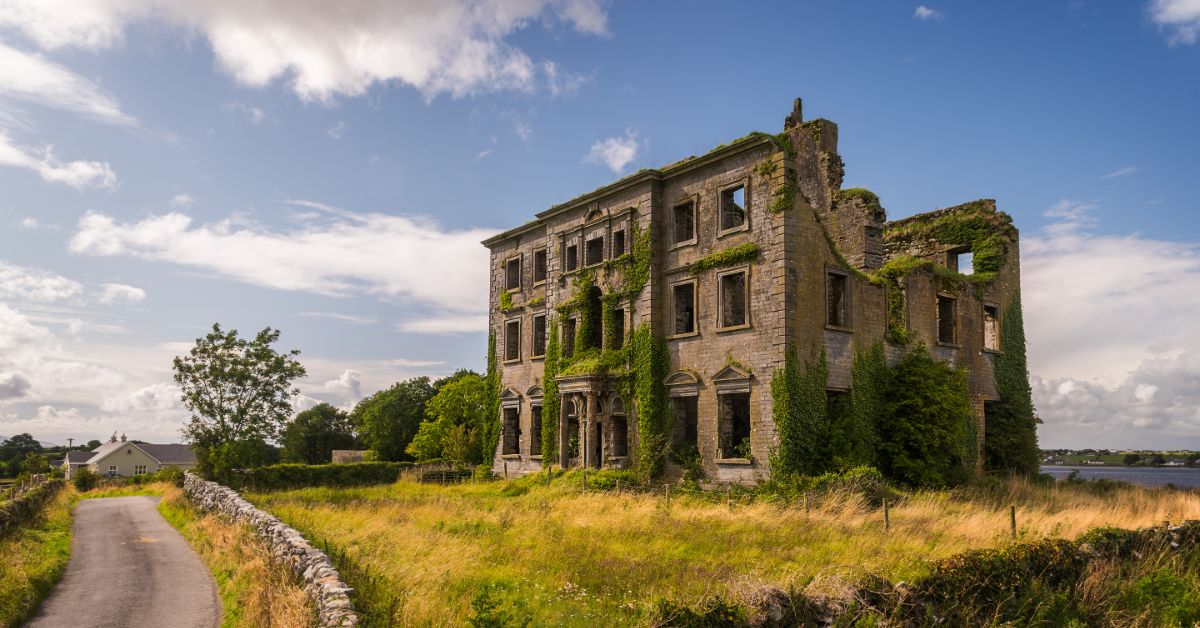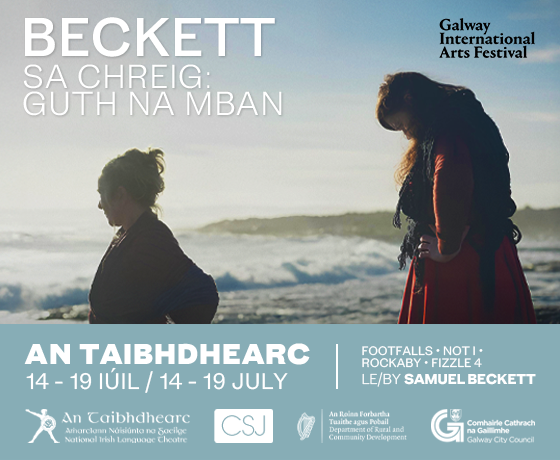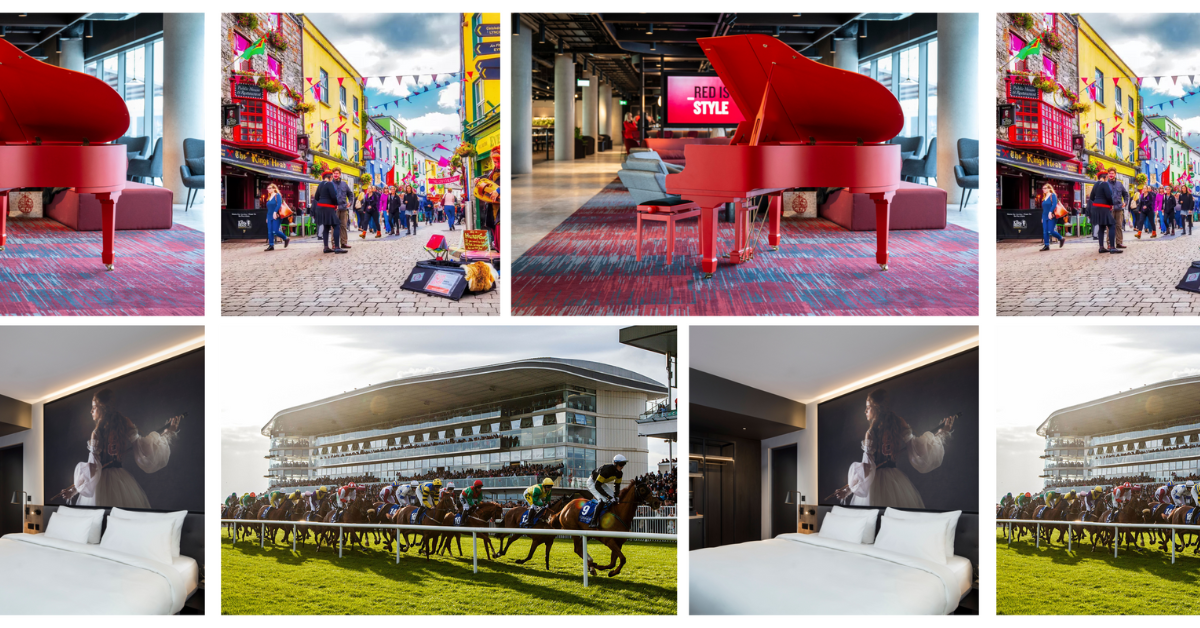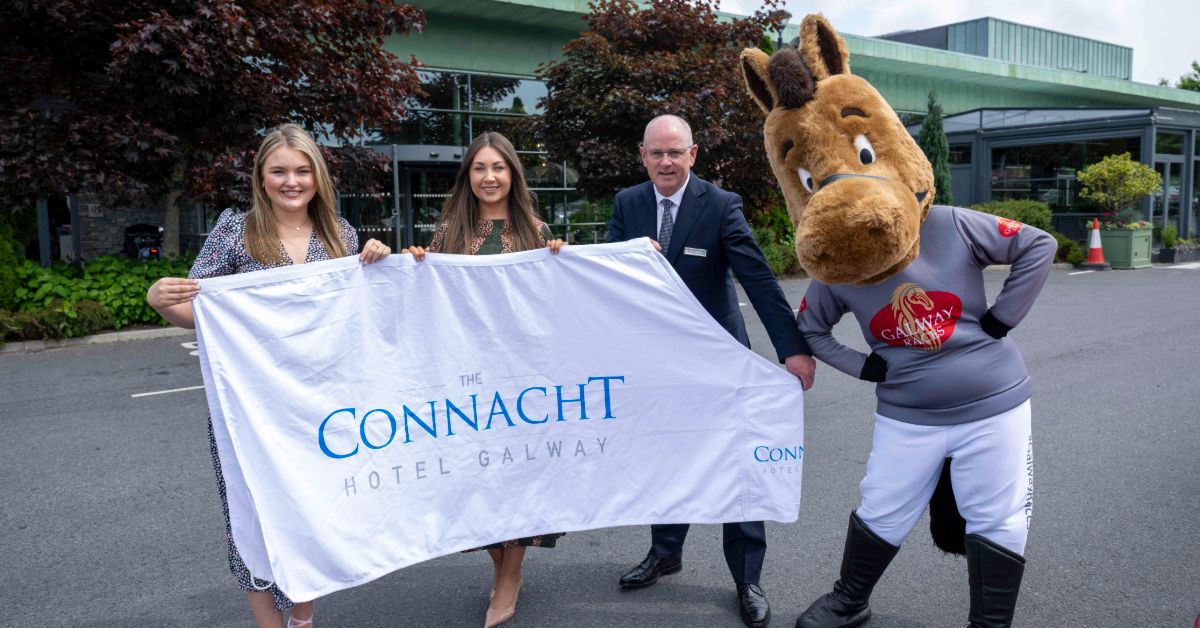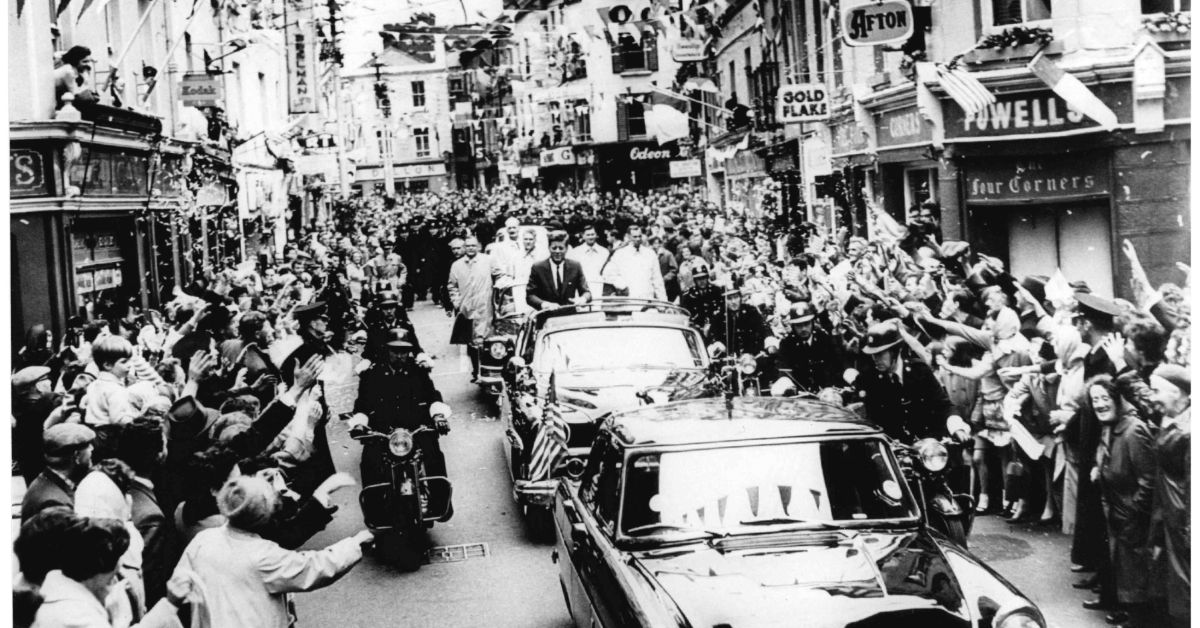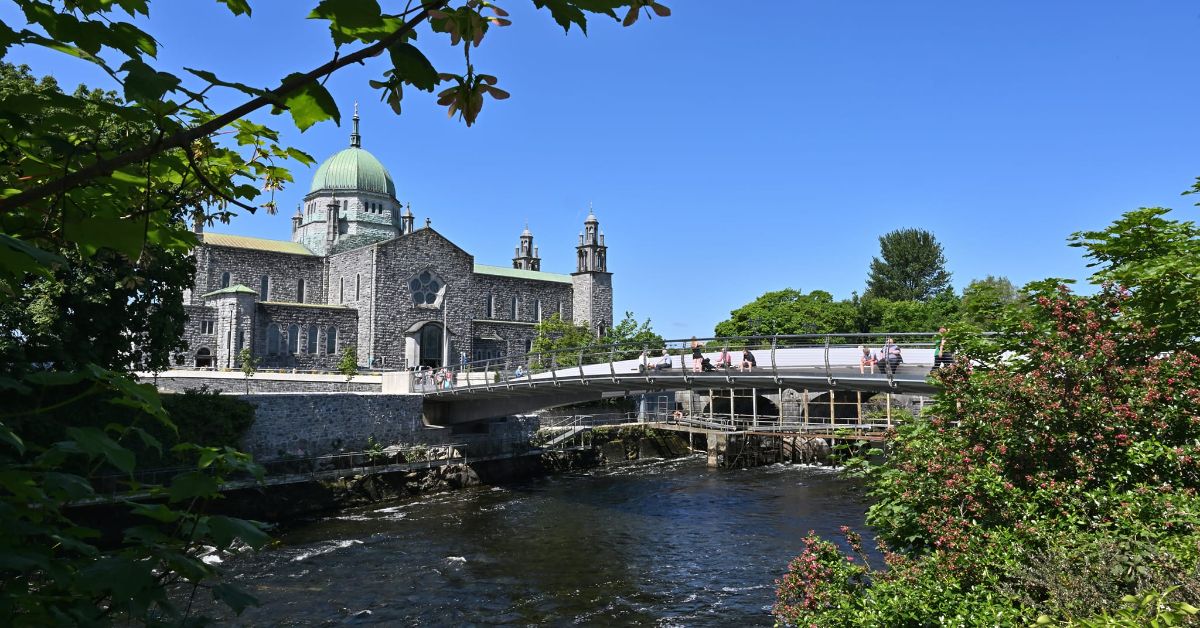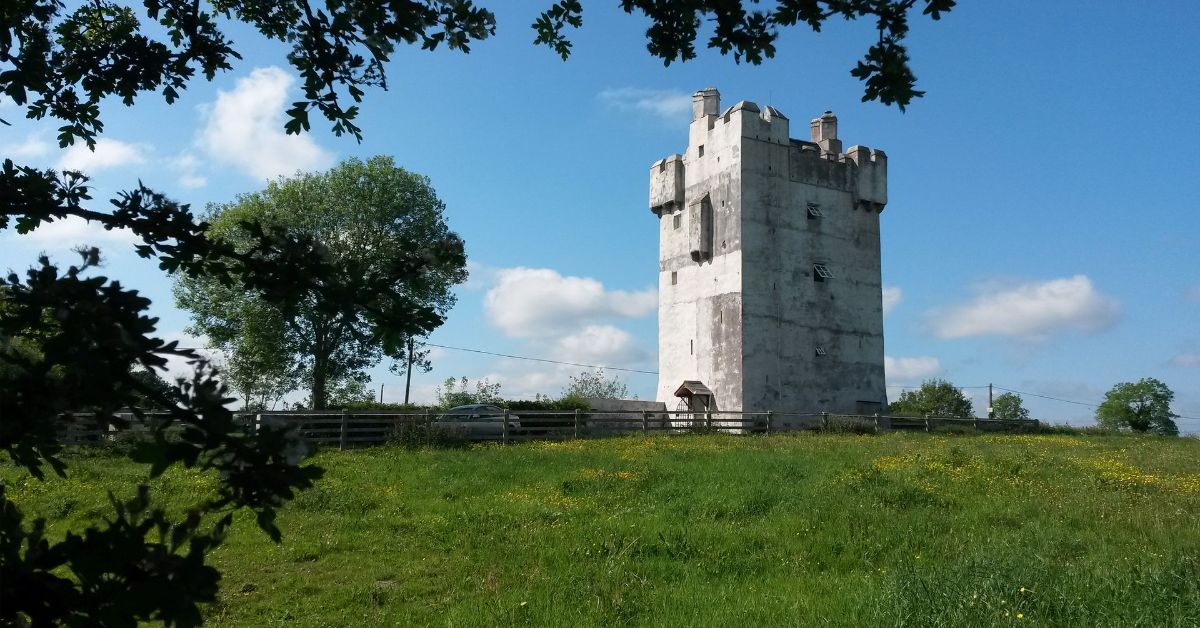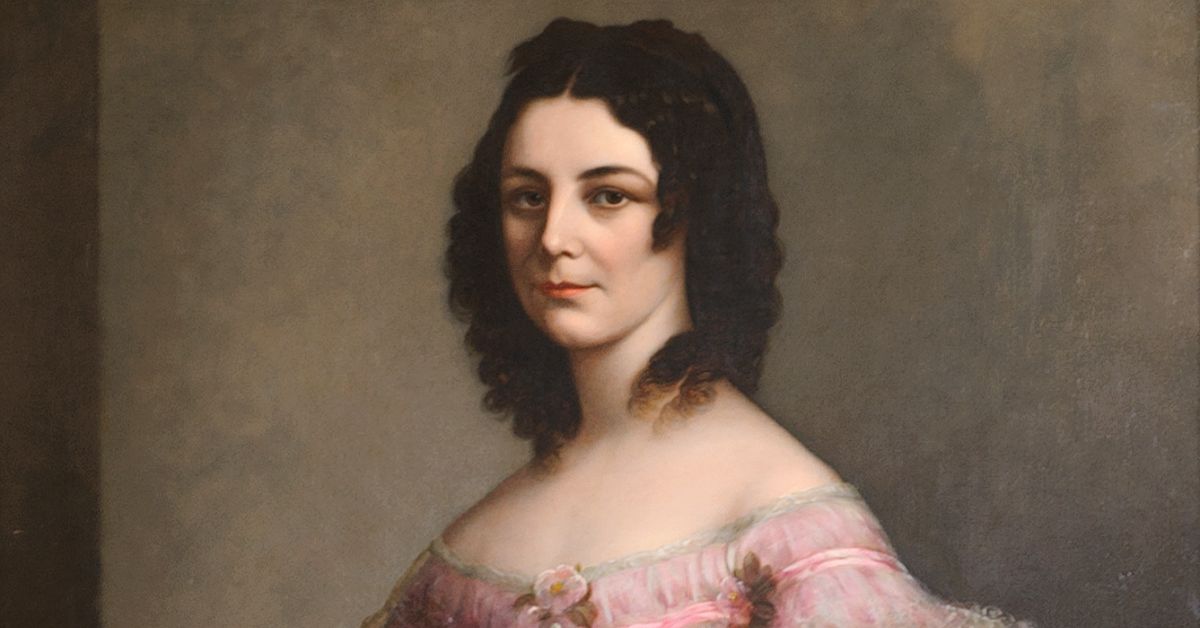Overlooking Kilcolgan River, the solemn skeletal structure of Tyrone House eerily overshadows its surroundings. Let’s take a glimpse into the history of this once great house that saw the rise and fall of the St. George family...
In days of old, the grandiose building once housed an influential family who played a key role in establishing many of Galway’s renowned organisations. Unfortunately, the success at Tyrone was not to last as the house later came to a bleak end one faithful day in the 1920s. Since then, it has been reduced to little more than a gaunt ruin containing nothing more than faint whispers of a ghostly haunting.
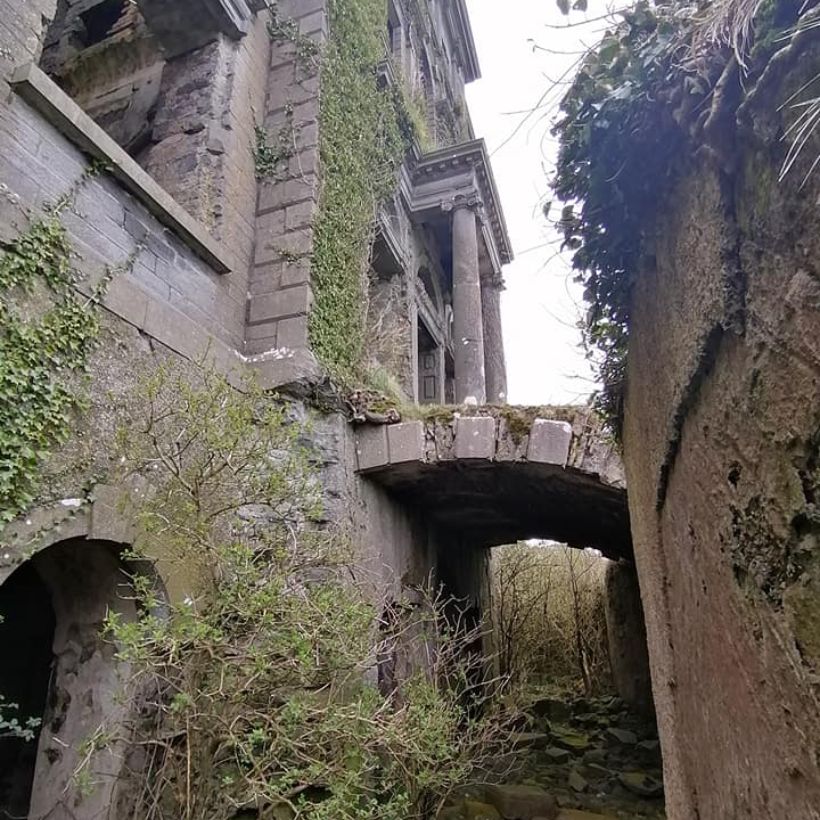
At the time of Tyrone House’s construction, the St. George family owned much of the area surrounding Kilcolgan. Built in 1779 for a Christopher French St. George (1754-1826), on a promontory by the estuary of the Kilcolgan river about a 2 mile distance from Kilcolgan village. The dramatic design of this three-storey house made it one of the grandest houses in Ireland with breath-takingly beautiful sea views and Galway Bay sunsets. The estate had previously been a French estate but the family assumed the title of St. George in 1774 due to inheritance from the St. George family of Hatley Manor in County Leitrim.
The house was designed by the esteemed architect John Roberts from Waterford. Roberts also designed Moore Hall in County Mayo and Waterford Cathedral. The structure of Tyrone House is an example of Palladian architecture, which strongly focuses on the use of symmetry, perspective, and values of the formal classical temple architecture of the Ancient Greeks and Romans. At the time of its construction, the interior of Tyrone House was beautifully decorated and furnished; within the entrance hall, visitors were met by a life-size white marble statue of Lord St. George. Displayed above the statue was the St. George family’s coat of arms.
Surrounding the house was the great yard, the flourishing gardens, the turf yard and the quay along Kilcolgan River. Within the garden’s 12 foot walls the St. George's grew peaches and pears along with apple and cherry trees. In as early as 1838, the family used heated greenhouses to grow their black Hamburg grape and white grape, which were grown on the grounds up until the 20th century.
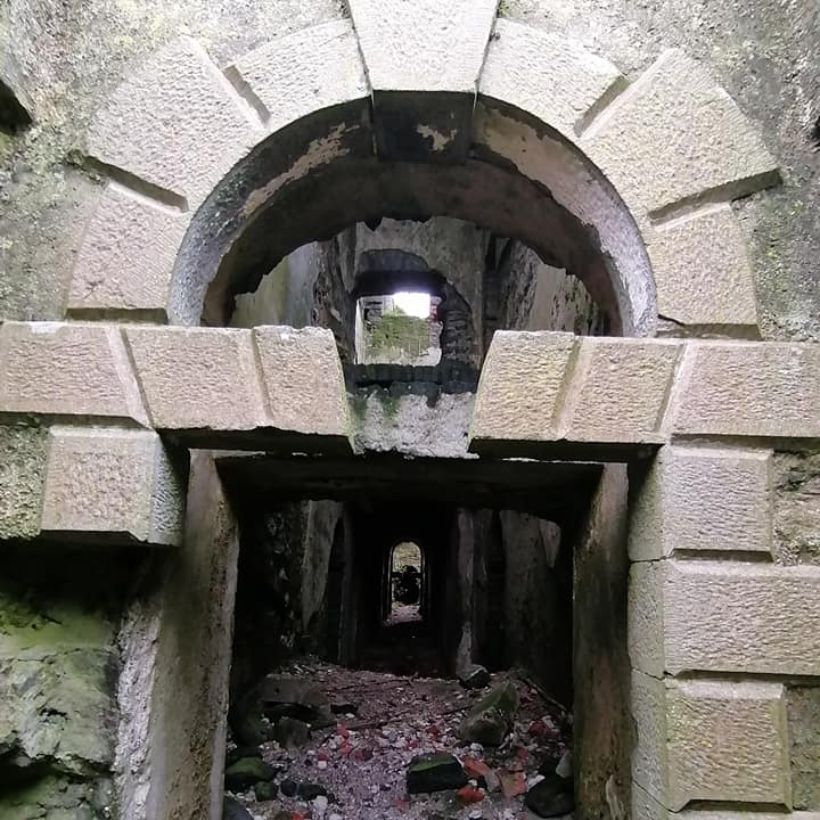
In 1824, Arthur French St. George was named the resident proprietor, his son Christopher St. George (1810-1877) had a keen interest in both economic and sporting affairs of the local area, in 1839 he helped set up the Galway Blazers hunt. His passion for horse-riding also led him to later help establish the Galway races. Christopher also had an interest in the local marine farming which led him to found the world famous Kilcolgan oyster beds along the Galway coast.
The 19th century took a toll on the powerful St. George family as it did to many of Ireland’s great country homes and following the death of Honoria Kane St. George, the widow of Christopher St. George, the family left the property in 1905. The treasured items inside the home were then divided amongst the living family members and taken away from the property. In 1912, Tyrone House was described by Violet Martin, a visitor to the property as being “rather dilapidated”.
Tyrone House served as an inspiration for Edith Somerville’s 1925 novel The Big House at Inver. According to Somerville, the novel “concerns the history of one of those minor dynasties that, in Ireland, have risen, and ruled, and rioted, and crashed in ruins.”
During the Irish War of Independence, the house was destroyed in a fire by the local Irish Republican Army unit as it was rumored that the house was intended to be used as an infirmary for the Black and Tans. A bed-bound caretaker was living in the house at the time. He was carried from his bed and taken to another building on the premises, his belongings were also removed from the building before the main house was set alight.
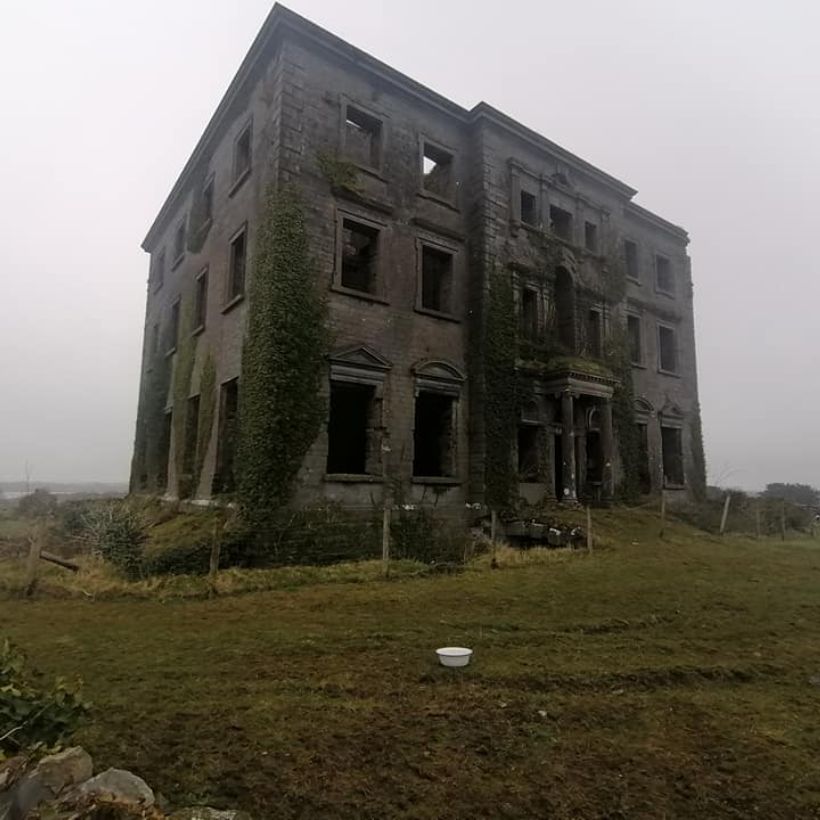
Since then, corner stones, original fireplaces, window frames, balustrades and other valuable architectural features have been removed, leaving only a bare structure abandoned to the harsh elements.
It is rumored that the ghost of Christopher St. George can be spotted throughout the ruins, however should you decide to pay Tyrone House a visit it is far more likely that you’ll spot a few friendly donkeys roaming about the grounds instead.
Discover more about the ancient houses of Galway from our collection of history stories here.
Thank you to Malachy Costello for the photos.
Published on Updated on


